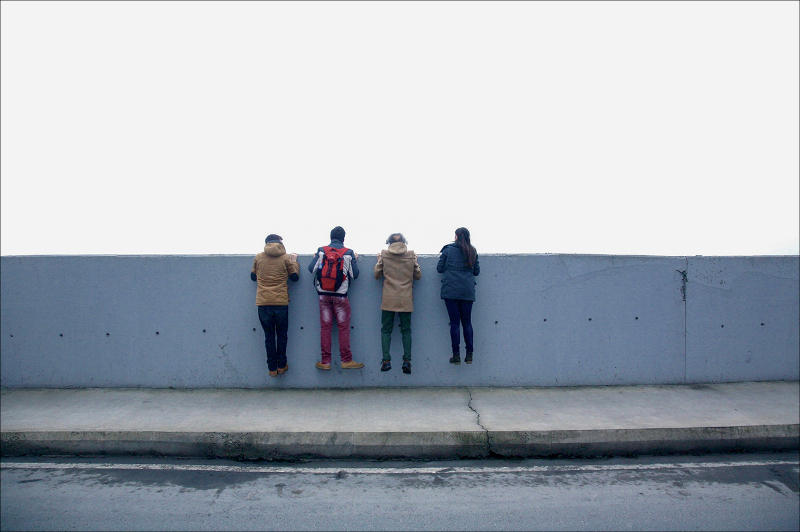MERİH AKOĞUL POET, WRITER AND PHOTOGRAPHY ARTIST
In the exhibition titled Beni Bul (Find Me) which brings the artist and their object together in the same frame, features works where artists interpret their views and perceptions of the world through photography.
Auto-portrait is often defined in fine arts and photography, as a sub-branch of portrait like landscapes, and still life photographs. The view here between the pose and the artist portraying it, is from one point. Artists, who cannot see themselves through other eyes, work to complete it by amplifying their presence. Unlike their previous works, artists know where to stop that is when to make the final brushstroke.
Self-portrait is the act of “being on one’s own” depicted by the artist in the painting. In this case, the artist does not have any of the advantages provided by painting a model. The artist is forced to interpret the existing space alone. Artists who have revealed their art through objects outside themselves until then, now embark on a journey to make new discoveries through their own face and bodies. This is not so different for photographers who take self-portraits. The protagonist, who will transform from the photographer into a model in this process, will work to get the best results within the limits of their own image this time.
The photographer will never know where photography ends, and where modelling begins. Perhaps the photographers take self-portraits to examine their own existence, and to make their egos they have concealed until that day, visible. The photographers take self-portraits not because a model is not available, but due to their desire to be remembered with their own images by combining their own mastery with a pose. The artist is all alone until the work is produced, and wants the world to know it.
Robert Cornelius’ self-portrait he took in 1839, made it to the history as the first self-portrait in photography. World famous photographers Man Ray and André Kertész have numerous self-portraits. When we take a quick glance at the history of self-portrait paintings in Turkey, we see numerous examples. Some of them are made in studios and others outdoors. The self-portraits by Othmar Pferschy, a prominent photographer of the Republic Period, from 1930s stand out as the first examples. Şinasi Barutçu’s famous self-portrait is remembered more than any other photograph he took.
Contemporary artists today indulge in pointing their lenses at themselves and becoming the star of their performances. Self-portraits are often portraits of a part of the body, mainly the face, reflections on different materials, traces left behind, and shadow of the artist. The expression displays one of the infinite possibilities of the face since each mimic corresponds to a psychological state. The viewer also determines own position before the work according to the style in which the photographer reflects himself or herself.
What matters in art is survival. All artworks mentioned in the art history, are the ones that have survived to this day by overcoming numerous obstacles. Sometimes it does not suffice for an artist to perform own art through objects as an observer. Even if the artist is an admired figure who has produced a large number of artworks, he or she would also like to leave behind own image alongside a name.
The most important characteristic of our time, is the technology living its golden age. Taking high-quality photographs and image transmission have been the primary function of all mobile devices, specifically the mobile phones. With the availability of advanced digital cameras and mobile devices that largely meet the needs of everyday life, people have increasingly pointed the lens on themselves. In this way, people who face themselves through “selfies” have entered a competition to find the ideal angle to photograph themselves.
This exhibition, that brings together the artist with its object in the same frame, features the works of artists with distinct photographic tendencies and approaches. These artists point their cameras to their inner world through their bodies and faces, and question their views and perceptions of the world through philosophy, psychology, sociology and art, and the works are featured in the exhibition under the title Find Me.
“Artist produces works at the intersection between the life and self. Taking self-portraits is in fact the artist playing with his or her own ego. The person that poses and photographs, meet at the same point and then separate. The only proof that remains is the work. Roland Barthes construes portrait photography as an ‘isolated space of forces’ in his book Camera Lucida, a masterpiece in photography, and successfully summarizes the relationship between the photographer and the model. It is a fact that when artists point the camera at themselves, this incites narcissism and boosts their ego. At this point, model and photographer resemble two competitors in a duel. At the same time, a great and long history of art are right by their side as a judge. In summary, the exhibition Find Me is a visual story of artists’ search for and discover of self through the art of photography.
Beni Bul Otoportreye Çağdaş Dokunuşlar
Find Me Modern Touches to Self-portrait
Curator: Merih Akoğul
Akbank Sanat (Beyoğlu-İstanbul) Until July 29th 2017
Participating Artist: Deniz Açıksöz, Burcu Aksoy, Kezban Arca Batıbeki, Sadık Demiröz, Ahmet Elhan, Ahmet Öner Gezgin, H-art Collective, Gül Ilgaz, Hüseyin Işık, Balkan Naci İslimyeli, Ali Kabaş, Çerkes Karadağ, Yonca Karakaş, Şahin Kaygun, Sıtkı Kösemen, Şükran Moral, Yıldız Moran, Levent Öget, Ferhat Özgür, Aleksi Petridi, Erhan Şermet, Rıza Aydan Turak, Cem Turgay, Muammer Yanmaz.



Leave a Comment